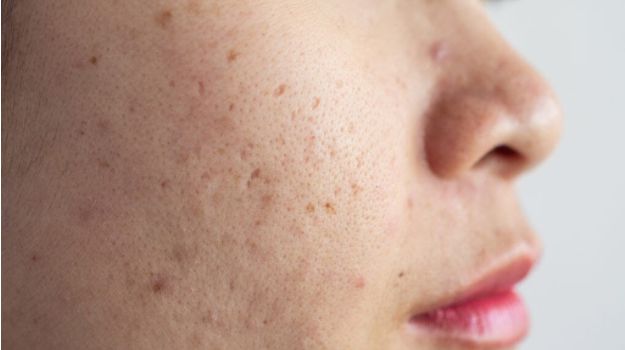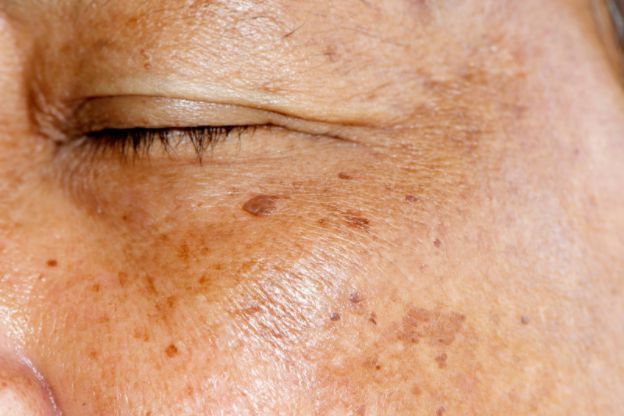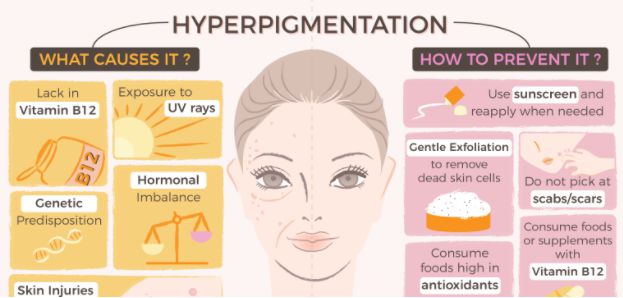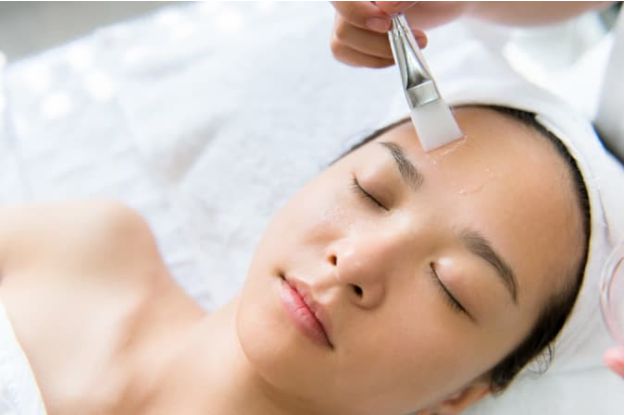
There’s a reason why knowledge of the causes of skin pigmentation is important. The skin is unarguably the largest organ in the human body. It is capable of a lot of things and performs various functions. It is also responsible for absorbing certain useful vitamins and protecting your internal organs from microorganisms.
However, as much as it is excellent for the performance of several functions, it is also quite prone to several conditions. One such condition is skin pigmentation.
Contrary to what you may think, skin pigmentation is actually very common. So common that millions of people across the world have to deal with it. Now, it doesn’t exactly have any serious health risks. But it isn’t very aesthetically pleasing. In this article, we’ll be exploring the causes of skin pigmentation, the ways you can prevent it, and how you can treat it if you have it already.

What is Skin Pigmentation?
Also referred to as hyperpigmentation, skin pigmentation is a difference in your skin’s pigmentation/colour. It is characterized by the appearance of darker patches on your skin. It affects people for different reasons, and it often appears on the arms, legs, and face, among others. While it does affect different kinds of people, it is particularly common among people with darker skin tones.
Skin pigmentation can appear in small patches here and there on your body. But, that’s not the only form as skin pigmentation can also come along in the form of large patches. In severe cases, the pigmentation may even cover your entire body.
Now, skin pigmentation isn’t a harmful skin condition on its own. We’ve established this already. However, it can be the symptom of a different skin condition. In that case, it may become important to seek medical attention to treat the underlying medical condition.
What Are The Different Types of Skin Pigmentation?
Before discussing the causes of skin pigmentation, you need to know the different types of pigmentation. Now, there are different types, with many of them being grouped based on the factors that caused them. They are:
Age spots
These are alternatively referred to as sunspots. As you can imagine, they often appear on your skin as you get older. This type of pigmentation is directly related to the amount of time you spend in the sun. Essentially, the older you are, the more time you will have spent outside in the sun. Furthermore, the more time you’ve spent in the sun, the more likely you are to get sun/age spots.
More often than not, they’ll appear on the parts of your body that are most frequently touched by the sun when you’re outside. So, unless you spend your entire lifetime wearing long sleeve shirts or trousers, then, you’ll have them appear on your arms and legs. Alongside that, they may also appear on your face and neck.
Melasma

This is a fairly more serious form of pigmentation. The pigmentation itself doesn’t pose any health challenges. However, most people deem it serious because it is characterized by the sudden/gradual appearance of huge patches of dark spots on your skin, especially your face and stomach. With such pigmentation patches on your face, it is nearly impossible for others not to notice it.
Also referred to as chloasma, it usually affects women during pregnancy. So much so that some people refer to it as the mask of pregnancy. The prevalence in women can be linked to the noticeable change in hormones during that period. Alongside that, it can also come along after taking oral contraceptives because these can lead to hormonal changes. However, despite the difference in the “hormone landscape” between genders, it has been known to affect a few men.
Post-inflammatory pigmentation
As implied by the name, this type of pigmentation often shows up after your body heals from an inflammation. Usually, the injury heals up and then leaves a flat patch of discoloration on your skin. It usually happens to people who have recently recovered from acne or acne treatments.
It is also fairly common among those who have recently undergone cosmetic procedures like chemical peels, laser treatment, and/or dermabrasion.
What Are The Causes of Skin Pigmentation?
If you’re curious about what causes pigmentation, you should know that the general answer to that is an increase in your melanin production. Even if you’re not particularly inclined towards science, you must’ve heard the word melanin once or twice on the internet.
It is the special pigment in your body that’s responsible for the colour of your skin, eyes, and hair, among other things. It is created through a process called melanogenesis. Dark-skinned people often have more melanin than light-skinned people.
Now, having established increased melanin at the top of the list of the causes of skin pigmentation, it’s important to know what can trigger an increase in melanin production. A couple of them are:
Excessive exposure to sunlight
Have you ever wondered how your body gets a little more tanned when you intentionally stay in the sunlight for several hours? Have you noticed that if you do get a tan all over your body, your bikini area is likely to remain unscathed? If you have, you should know that it is largely because the sun is one of the leading causes of skin pigmentation.
Your body naturally produces melanin when you get exposed to sunlight. Naturally, the process is designed as a way to protect you from UV rays. In a way, you can say that your body acts as your personal sunscreen. However, the longer you stay in the sun, the more melanin your body will need to produce.
If you’re lucky enough not to get a ridiculously painful sunburn, you’ll tan first. At that point, it may be attractive, especially if it’s all over your body. But, the longer you stay under the sun without appropriate protection for your skin, the worse it becomes.
It gets worse if only a part of your body gets exposed to the sunlight. It means that part will continue producing more and more melanin. Eventually, what was meant to be a coping mechanism for excess sunlight turns into a skin condition — skin pigmentation
Skin pigmentation caused by sun exposure doesn’t usually happen in a day, or two, for that matter. It won’t come along because you accidentally slept off under the sun at the beach. It’s more likely to show up after years and years of careless sun exposure without sunscreen.

A change in hormones
This factor is another major cause of skin pigmentation in people across the world. It is particularly responsible for the skin pigmentation that comes along with melasma or chloasma. This condition is particularly common among pregnant women or those who have taken oral contraceptives as explained earlier. Beyond that, any hormone treatment that alters hormones’ production in the body can lead to pigmentation.
The way it works is that as the hormones “sense” an imbalance in their production, they begin to alter melanin production levels in the body. As such, even if you’re only exposed to a moderate amount of sunlight, your body may start producing more melanin than you need. In the end, you’ll get dark patches of skin on your face or on your belly.
Medication
In reality, drugs interact with your body in many different ways. As such, several different drugs can alter your melanin production levels, leading to skin pigmentation.
Certain drugs used in chemotherapy can cause skin pigmentation. Away from chemotherapy drugs, you can also get skin pigmentation as a tradeoff from using antibiotics, antiseizure, and antimalarial drugs.
Injuries and inflammations
Normally, when your skin is healing a wound, it produces a bit more collagen. This is to ensure that a lot of restorative processes happen, from regaining skin tightness to healing scars, among others. However, for more reasons than one, your collagen levels may be low. As such, the chances are that the injury or inflammation may leave behind the parting gift of a dark patch of skin.
It is particularly common when you have inflammations or injuries from acne, psoriasis, and Atopic Dermatitis.
Age
The human body is filled with different cells and bodies responsible for carrying out various functions. One such group of cells are the melanocytes. As you can probably imagine, they’re responsible for seeing your body through the melanin production process — melanogenesis.
Unfortunately, like every other cell in your body, their production can become depleted, and they can die off. This is especially common with age. However, the strange thing is that as melanocytes’ production thins out in your body and others die off, the surviving few become bigger.
When that happens, they’ll begin to produce melanin in more concentrated forms. Any area of your skin where this phenomenon occurs is likely to experience skin pigmentations.
Think of it like replacing the sprinklers all over a building with huge taps that just pour out water when smoke sensors go off. They may do the job of putting out the fire. But, because the water is so concentrated in one tap, it’ll end up just flooding the room.
Medical conditions
Skin pigmentation is a condition in itself. But, it can also be the sign or symptom of an even bigger condition. For instance, if you have gastrointestinal or autoimmune diseases, they’re likely to trigger skin pigmentation in your body. Alongside that, if you have vitamin deficiencies or metabolic issues, you may get skin pigmentation.
Another occurrence of skin pigmentation with medical conditions is Addison’s disease. It is an endocrine ailment, and it often causes pigmentation in the places that are most exposed to sunlight and friction, like your elbows or knees.
Birthmarks
Birthmarks are marks that you’re born with. Many of them are pigmented, and some aren’t. They usually just occur naturally and do not require you to get skin pigmentation treatments in Newmarket. This is largely because they fade off on their own after a while.
However, this isn’t the case for all birthmarks. Some of them either take much longer before they fade off after birth, or they remain permanently. While there are different types of birthmarks you can get, here are some of the pigmented ones:
- Moles: These are brown or black patches of skin that appear in different parts of your skin. They aren’t caused by excessive sun exposure or by medical conditions, or anything else that came earlier on this list. They are merely there, posing no threat to your health. However, given their darker pigment, it’s evident that there’s a bit more melanin production in your mole area. For some, this little mole may not be enough reason to start searching for where to get skin pigmentation treatments. But, it certainly can be fixed.
- Café-au-lait spot: These are oval-shaped patches of discoloured skin on the human body. They are usually light brown or coffee black. This pigmentation is likely to fade away naturally as you grow older.
- Mongolian blue spots: These usually appear on the buttocks or the back of babies. It is usually a grey or blue discoloration but still qualifies as a pigmentation. It is most common among darker skin children.
Related article: How to Get Rid of Skin Pigmentation
How To Treat Skin Pigmentation?
Having learned about the causes of skin pigmentation, it’s only natural that you figure out how to get rid of it. Luckily, advances in cosmetic technology mean there are easy ways to reduce the appearance of pigmentation.
Chemical peels are one of the best treatments available to manage pigmentation. It’s non-invasive and offers brilliant results. Over the next few sections, we will show you what to expect from chemical peels.
Chemical peels: Everything You Need To Know
Chemical peels for pigmentation treatment involve using special types of acids to exfoliate your skin’s top layer. There are different chemical peel treatments with different levels of intensity. They include:
- Glycolic Acid Peels. These are the lightest form of chemical peels. These are useful for treating mild pigmentation issues.
- TCA (Trichloroacetic Acid) Peels: These are significantly more powerful than their predecessor. Their concentration is so intense that they can take care of deeper pigmentations in your skin.
- Phenolic peels: This type of chemical peel is the strongest of all three. The concentration is so high that you may need anesthesia to undergo the process. The importance of a qualified medical professional here cannot be overemphasized.
The main purpose of all three types of treatment is to remove the top layer of pigmented skin. This automatically triggers the healing process in your body, forcing your skin to begin regenerating itself. When it does, you’re not likely to see the pigmented areas appearing again.
Now, you should know that despite the obvious care required to carry out this method of treatment, it can still be practised at home. However, at-home chemical peels are highly inadvisable. When performed by a qualified and trained medical aesthetician in Newmarket, you’ll get safety and effectiveness. But, when you do it yourself, you’re not likely to get results. Worse still, you may have to deal with multiple complications.

What Are The Benefits of Chemical Peels?
At the top of our list of benefits of chemical peels for pigmentation is that the procedure isn’t an invasive one. As such, you don’t need to worry about your skin getting pierced or subject to incisions. Alongside that, you won’t have to worry about major surgical infections.
Another thing that’s particularly enticing about this treatment method is its minimal recovery time. Of course, this depends on the intensity of the chemical peel you get. But, all things being equal, you can expect to be back on your feet in no time.
What are the potential side effects?
Among other things, you may experience:
- Redness
- Scarring
- Infection
The first side effect on this list is actually quite normal. It should disappear after the first few days or weeks. Scarring, on the other hand, is quite rare. The best way to prevent it from happening is by working with a professional who knows what they’re doing. The occurrence of the third side effect is incredibly rare. It only shows up when you neglect your medical aesthetician’s aftercare orders.
Who Can Use Chemical Peels for Skin Pigmentation?
Technically speaking, virtually everyone can use chemical peels to remove pigmentation. However, it is even better for light-skinned people who get pigmentation due to excessive sun exposure. But, chemical peels may be a bad idea if:
- You’re expecting a child
- You have cold sores often.
To find out your perfect compatibility, you must speak with a medical aesthetician first.
What is the Cost of Chemical Peels in Newmarket?
The cost of chemical peels in Canada differs from place to place because your medical aesthetician has to calculate several factors. These include the anesthesia you’ll require for intense chemical peel sessions and the size of the area to be covered, among others.
The surest way to know the cost will be to contact your potential service provider. However, once you’ve confirmed the cost, you must remember that your insurance company may not fund it. You’d have to pay by yourself.
In Conclusion
In this article, we’ve explored the causes of skin pigmentation in detail. We’ve established that while it may be caused by external factors like the sun, your hormones can also be a culprit.
Regardless of the cause, if you have the condition, you can treat it efficiently. Start by checking out our medical spa in Newmarket for pigmentation.
Book Free Consultation
"*" indicates required fields
-
Facebook
-
Twitter
-
Linkedin






